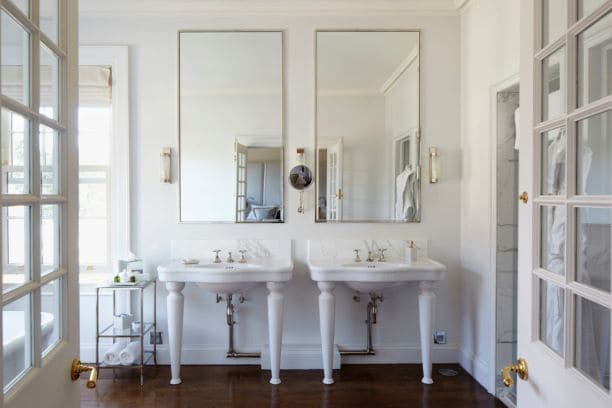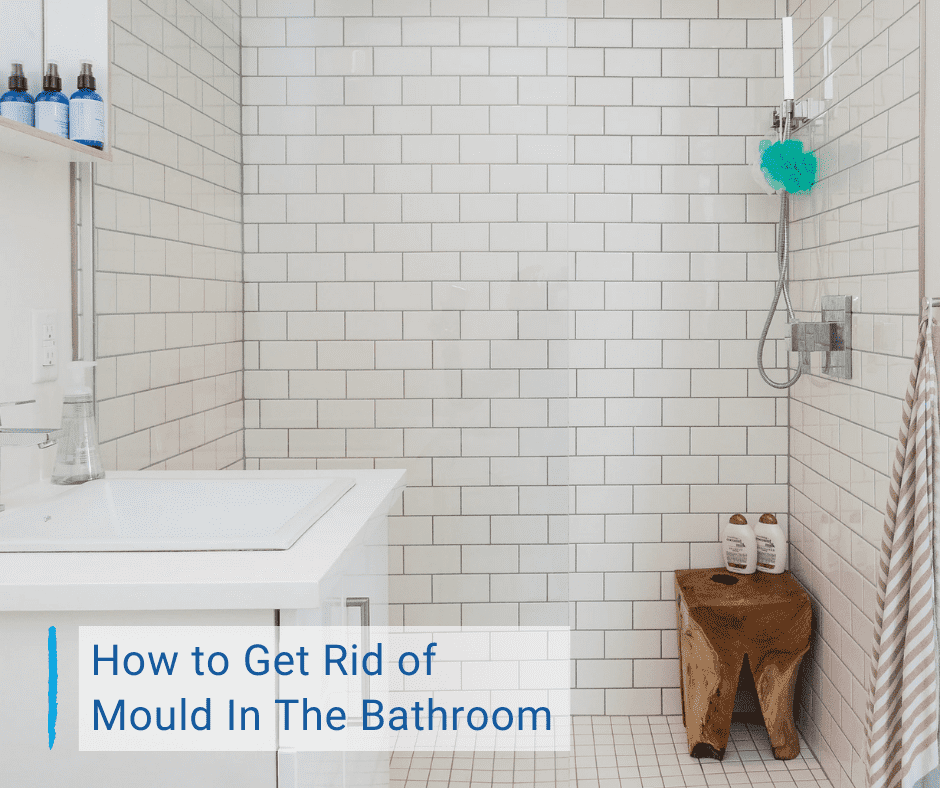Mould in the bathroom is very common in bathroom, as these are perfect damp environments for mould to thrive. After having posted three parts already, here is the last part on how to get rid of mould in the bathroom.
How to get rid of mould on painted walls
First of all, use the natural mould removal spray and wait two days to see if the mould returns. If it does, move on to using the stubborn mould removal spray. However, be sure you don’t combine cleaning products and don’t use the sprays back-to-back.
Natural mould removal spray
Ingredients
- 2 tablespoons of Borax
- 1/4 cup of white vinegar
- 2 cups of hot water
Directions
- Combine the ingredients listed above in a bowl and stir until the Borax dissolves.
- Then, pour the mixture into a spray bottle and liberally apply on the painted walls, tiles or other non-porous surfaces that contain mould spores.
- Next, scrub thoroughly and immediately wipe clean.
- Finally, you spray again and let it sit for 10 minutes before wiping it dry again.
Stubborn mould removal spray
NOTE: Do NOT use this bleach-based mixture at the same time, or not even on the same day. Same goes for any other cleaning product. There are some cleaning products you should never mix, and bleach is one of them.
Ingredients
- 1/4 cup of bleach
- 2 cups warm of water
Directions
- Firstly, open the windows to ensure adequate ventilation.
- Combine the ingredients above in a spray bottle.
- Next, you liberally apply on your painted walls, tiles or other non-porous surfaces; scrub thoroughly and wipe clean.
- If any mould remains, reapply the mixture and let it sit for 15 minutes before scrubbing. Then spray again and wipe with a clean, damp cloth.
- For quickly drying, direct a fan at the treated spot(s).
How to get rid of mould on cement
Unfinished basements are common sites for mould growth. If your home has a basement, it’s a good idea to inspect the walls and floor several times a year, particularly in your area’s wet season.
For unfinished cement, concrete, or stone basement walls, go straight to the stubborn mould removal spray method above. Be sure to open all doors and windows in your basement. After all you don’t want loosened mould spores or fumes from the spray to get trapped in your home.
For finished basements, try the natural mould removal spray first on painted walls. If the walls are unpainted, see the next section on removing mould on drywall.
How to get rid of mould in the bathroom: drywall
Mould can grow on unpainted surfaces, like drywall and popcorn ceilings, too. These surfaces are porous, which means the mould not only builds on the surface, but also threads its way into the structure of the drywall or ceiling material, too.
If mould returns after using both mould removal sprays above (several days apart), you’ll need to replace the drywall, unfortunately.

How to stop mould from growing on walls
To get rid of mould on walls permanently, you first need to remove it using the steps above. Then, adopt the following practices to keep it from returning.
In basements
- Open curtains daily. Sunlight is a natural mould killer.
- If your basement has windows and doors, open them a few minutes each day to allow air to circulate.
- Use fans or space heaters to circulate air in basements without windows.
In bathrooms
- Use bathroom fans after every shower or bath for at least 10 minutes.
- Keep shower doors open to allow air to circulate. Plastic shower curtains should be shaken well to dislodge water droplets and left partially open afterwards.
- Spray your shower or bathtub with a homemade mould-killing spray after use.
- Clean your bathroom, kitchen, and laundry room weekly. Look for signs of moisture or leaks in cabinets.
- Replace damaged grout in your shower and tub immediately.
In the rest of your home
- Keep your home’s humidity levels in check. Overly humid air contributes to mould and mildew growth.
- Visually check your roof after severe storms for loose shingles or other damage that could allow water to enter your attic or home.
- Keep debris and junk away from your home’s foundation, so water does not collect there and seep into your basement or under your home.
- Watch for signs of cracks in your foundation and contact foundation repair specialists immediately if you see any.
- Make a point to keep your pipes from freezing in the winter. Burst pipes create long-term water damage that can lead to mould.
- Inspect your washing machine hose quarterly and replace it every five years, even if it does not show wear. (Many homeowner insurance policies will deny claims for water damage if you don’t!)
If you have read all the parts, you now know exactly what causes mould, how to get rid of mould and how to prevent mould from returning. Please do not hesitate to leave a comment if you need further explanation on how to get rid of mould in the bathroom.

